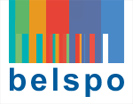The third meeting of the COOL IAP Network – COOL3, was organised by Tom Beckers (KULeuven) and took place on December 11th, 2014 at Iers College in Leuven. The meeting, attended by about 40 researchers, featured updates on WP progress by the WP leaders in the morning, as well as focused research presentations by junior staff in the afternoon. The meeting concluded with a keynote lecture by Pr. Alfonso Hamm (University of Greifswald) in the afternoon. The different documents associated with the event are available for download on this page.
The full program of the meeting appears below:
09.30 Introduction by Axel Cleeremans
09:40 Progress Reports
09:40 P1a (ULB) – Cleeremans/Peigneux
09:50 P1b (ULB) – Kolinsky/Content
09:50 P2a (UG)- De Houwer
10:10 P2b (UG) – Brass
10:20 P3 (KUL) – Beckers
10:30 P4 (UCL) – Rossion
10:40 INT1 (UCLondon) – Haggard
10:50 INT2 (Sussex) – Dienes
11:00 Coffee break
11:30 Research Presentations – Part I
11:30 Senne Braem (UG)
11:55 Elisa Maes (KUL)
12:20 Lunch + Administrative meeting (Pls only ; 13:00-13:50)
13:50 Research Presentations – Part II
13:50 Irène Cogliati (ULB)
14:15 Nura Sidarus (UCLondon)
14:40 Aliette Lochy (UCL)
15:05 Fabienne Chetail (ULB)
15:30 Coffee break
16:00 Research Presentations – Part III
16:00 Peter Lush (Sussex)
16:25 Keynote Address: Alfons Hamm
Dynamics of defensive responses to threat
From the perspective of behavioral neuroscience fear and anxiety are emotional states that activate a defense system in the mammalian brain. This defense system regulates the encoding of threatening stimuli and organizes the response output to adjust to the threat. Animal data suggest that the amygdala is the core structure in this defense system. This subcortical defense system cannot only be activated by intrinsically innate aversive events (i.e., unconditioned threats), but also by conditioned previously innocuous stimuli that get access to the fear system after they have been associated with unconditioned threats. Importantly, defensive responses change systematically with increasing threat proximity, as outlined in the threat imminence model. According to this model non-threat specific hypervigilance is activated when the organism is in a context where a threat has been encountered previously (in clinical models this defensive behavior has been described as anxious apprehension or worry). When threat is detected defensive behavior switches to attentive freezing characterized by fear bradycardia and startle potentiation. During circa strike active defensive behavior (fight or flight) is engaged modulated by midbrain structures. Human data will be presented demonstrating the dynamic nature of defensive behavior comprising interacting adjustments both on the cognitive level of information processing but also on the level of automatic behavioral adaptations. Moreover, these behavioral adjustments correspond with differential neural network activation that also changes depending upon the proximity of the threat and the behavioral options that are available. Some clinical data will be presented to demonstrate how these neuroscience based models and empirical findings might be translated to the clinic and thus might provide better guidance for conceptualizing psychopathology of anxiety disorders beyond the level of pure symptom reports.
